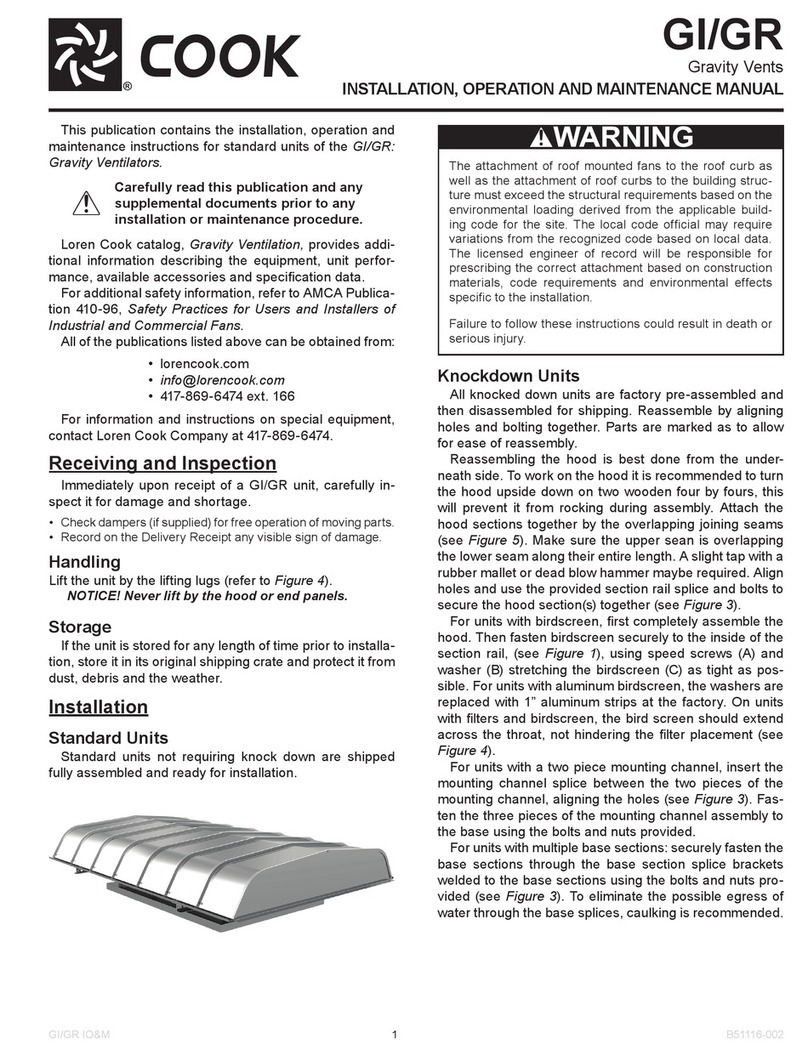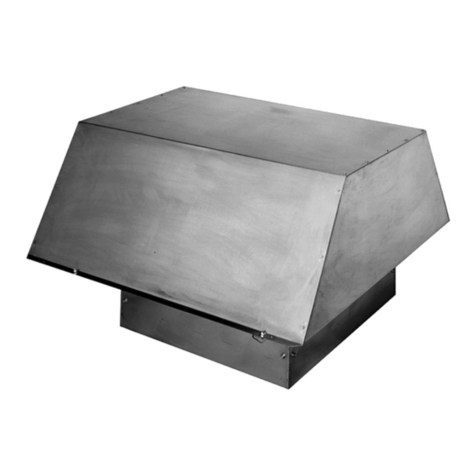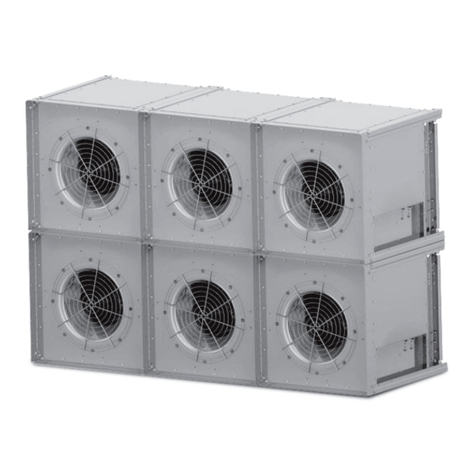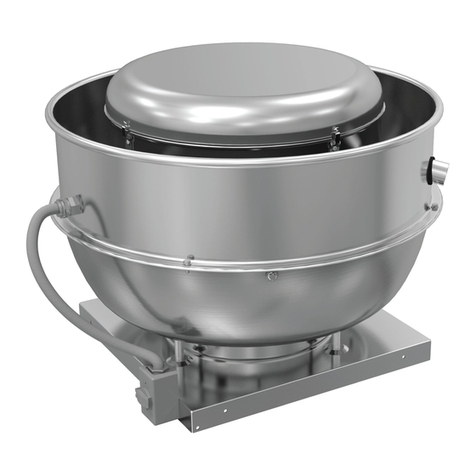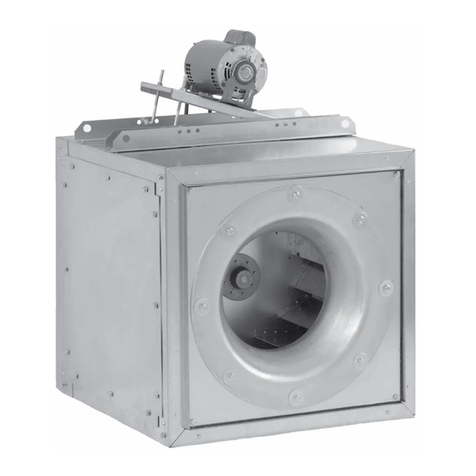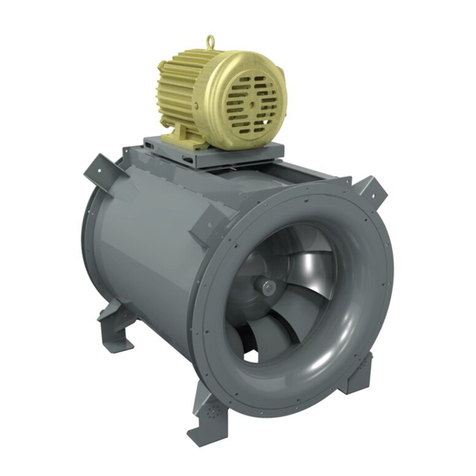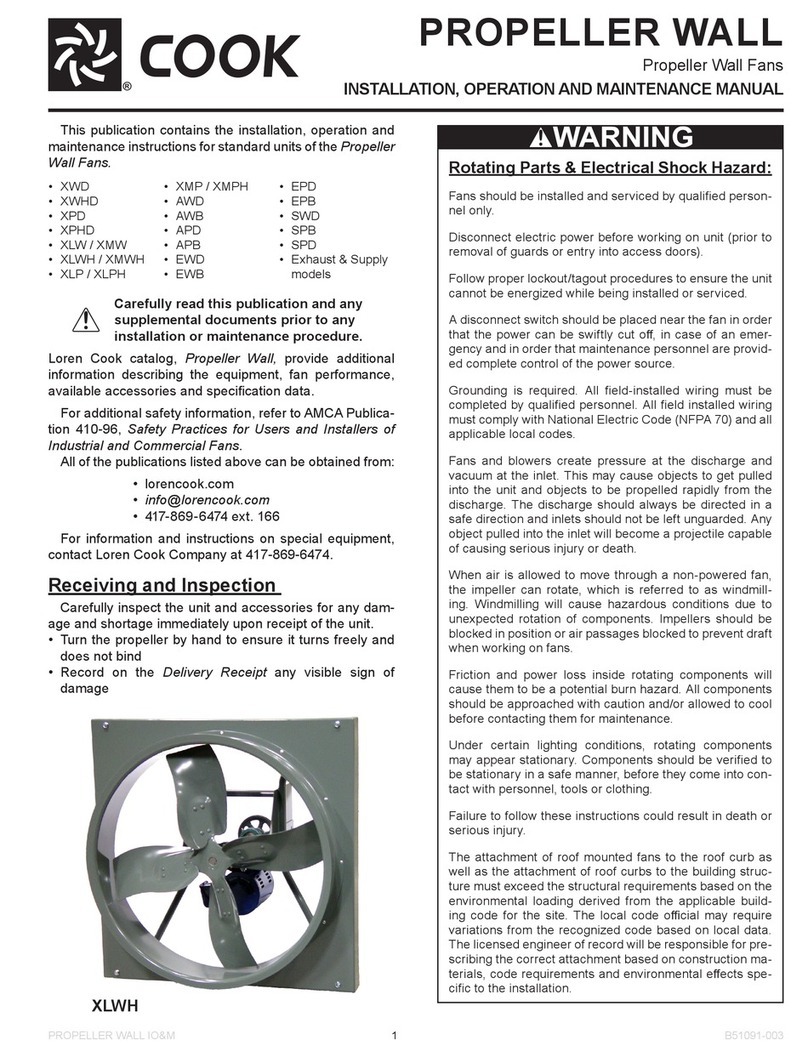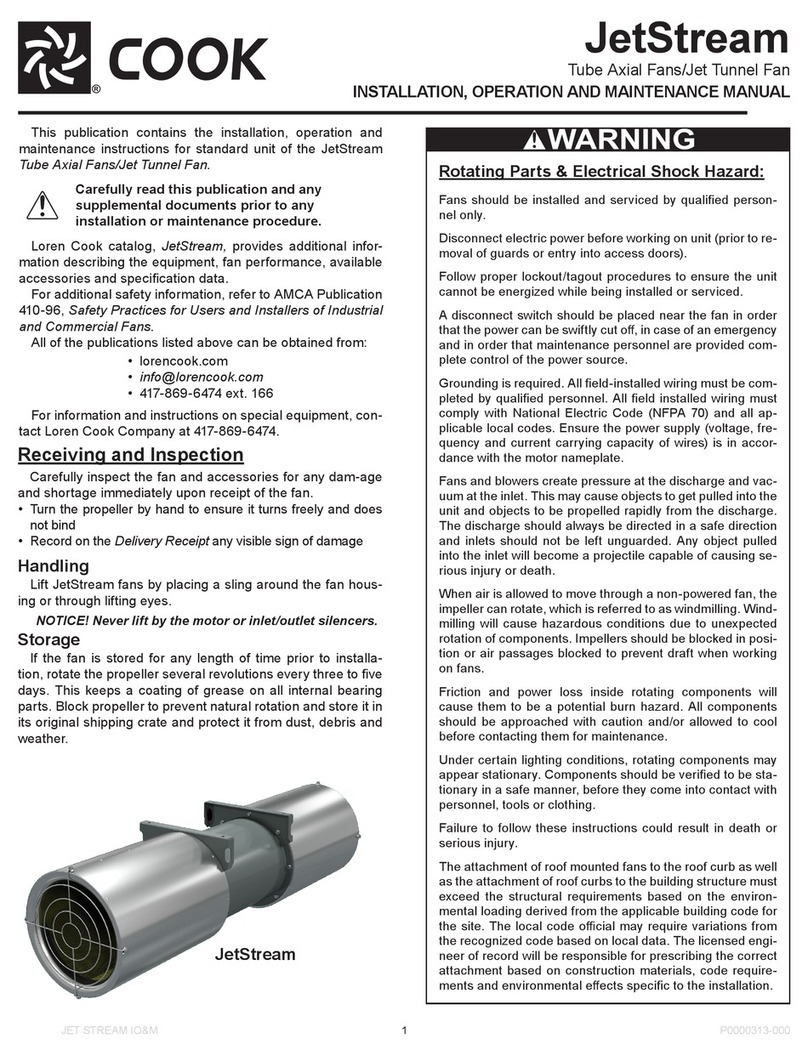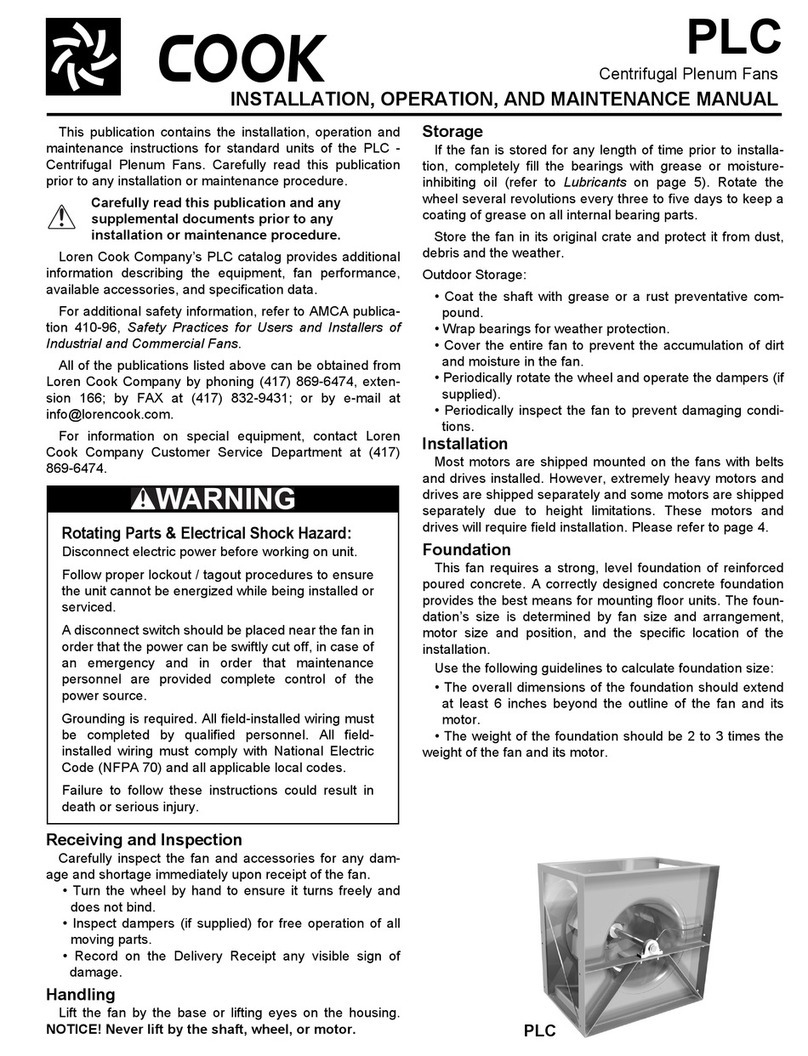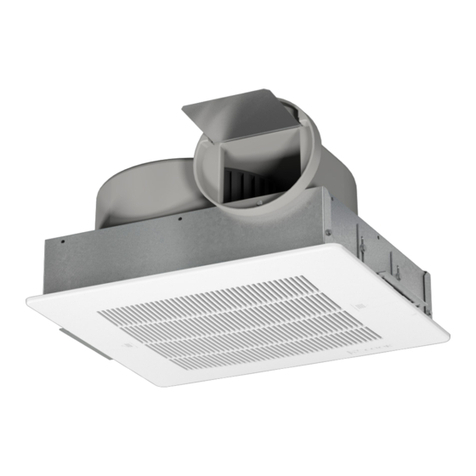
5TCN IO&M B51143-003
Inspection
Inspection of the fan should be conducted at the rst 30
minute, 8 hour and 24 hour intervals of satisfactory op-
eration. During the inspections, stop the fan and inspect
as per the Conditions Chart.
30 Minute Interval
Inspect bolts, setscrews and motor mounting bolts. Ad-
just and tighten as necessary.
8 Hour Interval
Inspect belt alignment and tension. Adjust and tighten
as necessary.
24 Hour Interval
Inspect belt tension. Adjust and tighten as necessary.
Recommended Torque for Setscrews/Bolts (IN-LB)
Setscrews Hold Down Bolts
Size
Key Hex
Across
Flats
Recommended
Torque Size Recommended
Torque
Min. Max.
#8 5/64” 15 21 3/8”-16 324
#10 3/32” 27 33 1/2”-13 780
1/4 1/8” 70 80 5/8 ”-11 1440
5/16 5/32” 140 160 3/4”-10 2400
3/8 3/16” 250 290 7/8”-9 1920
7/16 7/32” 355 405 1”-8 2700
1/2 1/4” 560 640 1-1/8”-7 4200
5/8 5/16” 1120 1280 1-1/4”-7 6000
3/4 3/8” 1680 1920 - -
7/8 1/2” 4200 4800 - -
19/16” 5600 6400 - -
Maintenance
Establish a schedule for inspecting all parts of the fan.
The frequency of inspection depends on the operating
conditions and location of the fan.
Inspect fans exhausting corrosive or contaminated air
within the rst month of operation. Fans exhausting con-
taminated air (airborne abrasives) should be inspected ev-
ery three months.
Regular inspections are recommended for fans exhaust-
ing non-contaminated air.
It is recommended the following inspections be con-
ducted twice per year:
• Inspect bolts and setscrews for tightness. Tighten as
necessary
• Inspect belt wear and alignment. Replace worn belts
with new belts and adjust alignment as needed. Refer to
Belt and Pulley Installation, page 3
• Bearings should be inspected as recommended in the
Lubrication Conditions Chart
• Inspect variable inlet vanes for freedom of operation and
excessive wear. The vane position should agree with the
position of the control arm. As the variable inlet vanes
close, the entering air should spin in the same direction
as the wheel
• Inspect springs and rubber isolators for deterioration
and replace as needed
• Inspect for cleanliness. Clean exterior surfaces only.
Removing dust and grease on motor housing assures
proper motor cooling. Removing dirt from the wheel and
housing prevents imbalance and damage
NOTICE! Follow the wiring diagram in the discon-
nect switch and the wiring diagram provided with
the motor. Correctly label the circuit on the main
power box and always identify a closed switch to
promote safety (i.e., red tape over a closed switch).
Wheel Rotation
Test the fan to ensure the rotation of
the wheel is the same as indicated by
the arrow marked Rotation.
115 and 230 Single Phase Motors
Fan wheel rotation is set correctly at the factory. Chang-
ing the rotation of this type of motor should only be at-
tempted by a qualied electrician.
208, 230 and 460 3-Phase Motors
These motors are electrically reversible by switching two
of the supply leads. For this reason, the rotation of the fan
cannot be restricted to one direction at the factory. See
Wiring Diagrams, page 4, for specic information on re-
versing wheel direction.
NOTICE! Do not allow the fan to run in the wrong
direction. This will overheat the motor and cause
serious damage. For 3-phase motors, if the fan is
running in the wrong direction, check the control
switch. It is possible to interchange two leads at
this location so that the fan is operating in the cor-
rect direction.
Final Installation Steps
1. Inspect fasteners and setscrews, particularly fan
mounting and bearing fasteners then tighten accord-
ing to the Recommended Torque chart.
2. Inspect for correct voltage with a voltmeter.
3. Ensure all accessories are installed.
Operation
Pre-Start Checks
1. Lock out all the primary and secondary power sources.
2. Ensure fasteners and setscrews, particularly those
used for mounting the fan, are tightened.
3. Inspect belt tension and pulley alignment.
4. Inspect motor wiring.
5. Ensure belt touches only the pulleys.
6. Ensure fan and ductwork are clean and free of debris.
7. Inspect wheel-to-inlet clearance. The correct wheel-
to-inlet clearance is critical to proper fan performance.
8. Close and secure all access doors.
9. Restore power to fan.
Start-Up
Turn on the fan. In variable speed units, set the fan to its
lowest speed and inspect for the following:
• Direction of rotation
• Excessive vibration
• Unusual noise
• Bearing noise
• Improper belt alignment or tension (listen for squealing)
• Improper motor amperage or voltage
NOTICE! If a problem is discovered, immediately shut
o the fan. Lock out all electrical power and check for
the cause of the trouble. Refer to Troubleshooting.
Tubular Centrifugal Inline






